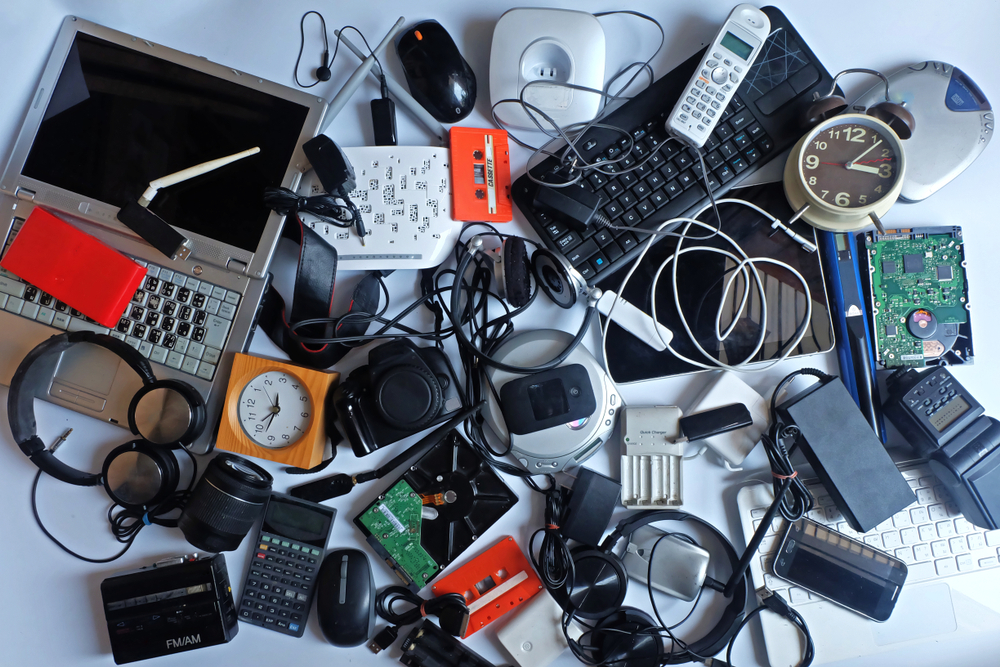Waste Electrical and Electronic Equipment (WEEE) is one of the fastest-growing waste streams in the UK. From computers and fridges to printers and lighting systems, electrical and electronic equipment plays a vital role in almost every business sector, but it also creates complex waste challenges.
As pressure grows to manage waste more responsibly and reduce environmental impact, understanding how to handle WEEE waste correctly is essential for any business.
What Is WEEE Waste?
WEEE waste refers to any item that requires electricity, whether from a plug or battery, that has reached the end of its life. This includes:
- IT equipment such as laptops, monitors and printers
- Large and small household appliances used in commercial settings
- LED and fluorescent lighting
- Cables, chargers and mobile phones
- Refrigeration units and vending machines
Under UK regulations, businesses that produce, treat or dispose of WEEE waste must do so in line with environmental legislation, including ensuring proper storage, handling and documentation.

Why Is WEEE a Problem?
WEEE waste is not only bulky and varied, it also contains a range of hazardous substances including mercury, lead and flame retardants. When incorrectly disposed of, these can cause serious harm to the environment and human health.
Additionally, much of the waste ends up in landfill or is illegally exported, contributing to pollution, health risks and the loss of valuable materials that could have been recovered and reused.
The sheer volume is also increasing rapidly. With shorter product life cycles, fast tech upgrades and increasing digitisation, electrical waste is piling up at a pace that most recycling systems struggle to manage.
Why It Affects So Many Businesses
WEEE waste isn’t just an issue for tech firms or manufacturers. Nearly every business in the UK uses electrical equipment, meaning most companies will generate WEEE at some stage – whether through office clearouts, equipment upgrades or routine maintenance.
This creates a compliance responsibility for a wide range of sectors including retail, hospitality, healthcare, logistics, education and professional services. Improper disposal can lead to fines, reputational damage and breaches of environmental legislation.
It’s also worth noting that producers of electrical equipment (such as manufacturers and importers) have additional responsibilities under the UK WEEE Regulations. This includes financing the collection and treatment of WEEE through registered compliance schemes.
The Value of Recycling WEEE Waste
Recycling WEEE is not just about compliance, it’s about value recovery. Many electrical items contain precious and strategic raw materials such as:
- Gold
- Silver
- Copper
- Rare earth elements
- Aluminium and steel
Recovering and recycling these materials reduces the demand for virgin resources, lowers carbon emissions and contributes to a more circular economy. Economically, this is significant. Globally, e-waste is estimated to contain billions of pounds worth of raw materials each year, much of which is lost through poor recycling practices.
For businesses, responsible WEEE disposal and recycling also opens up opportunities to:
- Reduce costs through asset recovery
- Improve ESG reporting and sustainability credentials
- Strengthen procurement policies through circular thinking
- Avoid penalties by staying compliant with regulations
Conclusion
WEEE waste is a business-critical issue that’s only going to grow in scale and complexity. From regulatory obligations to resource efficiency and sustainability strategy, how your business handles electrical waste matters more than ever.
Mobius offers fully compliant WEEE waste management services tailored to your operational needs. We help you manage end-of-life electrical items responsibly while recovering maximum value and reducing environmental impact.
If you’re looking for a smarter way to manage WEEE waste, use the contact form on this page to speak to our team.


